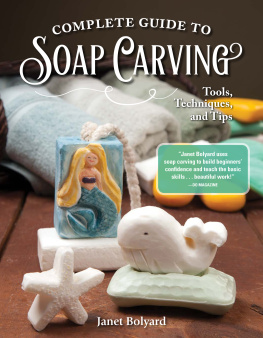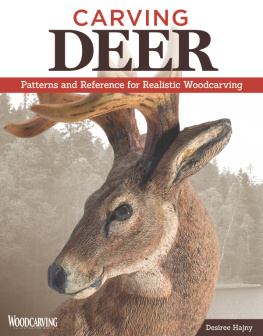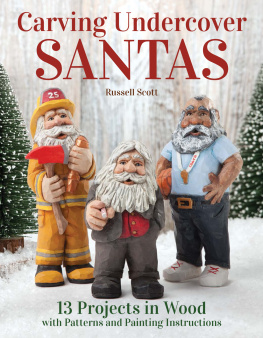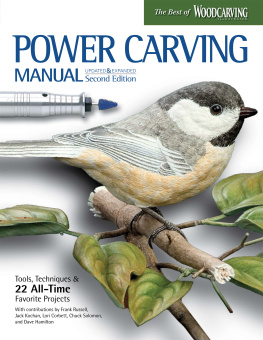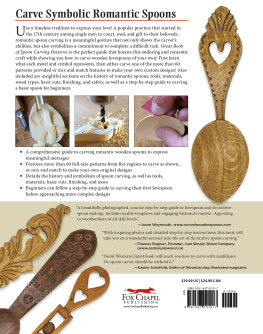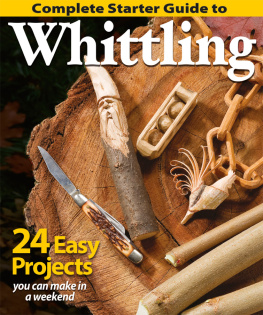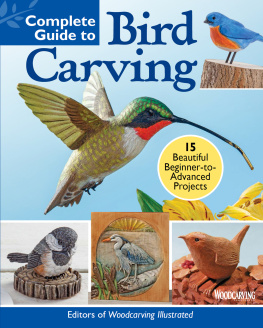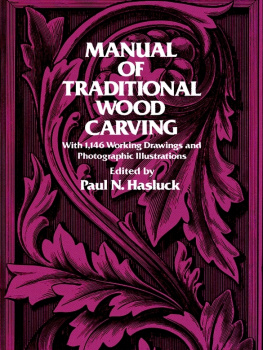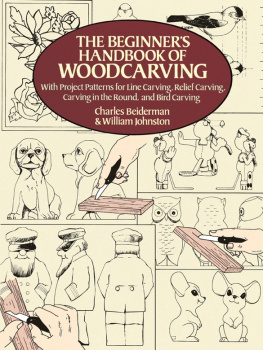Phillip R. Eck - Custom Gunstock Carving
Here you can read online Phillip R. Eck - Custom Gunstock Carving full text of the book (entire story) in english for free. Download pdf and epub, get meaning, cover and reviews about this ebook. year: 2005, publisher: Stackpole Books, genre: Home and family. Description of the work, (preface) as well as reviews are available. Best literature library LitArk.com created for fans of good reading and offers a wide selection of genres:
Romance novel
Science fiction
Adventure
Detective
Science
History
Home and family
Prose
Art
Politics
Computer
Non-fiction
Religion
Business
Children
Humor
Choose a favorite category and find really read worthwhile books. Enjoy immersion in the world of imagination, feel the emotions of the characters or learn something new for yourself, make an fascinating discovery.

- Book:Custom Gunstock Carving
- Author:
- Publisher:Stackpole Books
- Genre:
- Year:2005
- Rating:4 / 5
- Favourites:Add to favourites
- Your mark:
- 80
- 1
- 2
- 3
- 4
- 5
Custom Gunstock Carving: summary, description and annotation
We offer to read an annotation, description, summary or preface (depends on what the author of the book "Custom Gunstock Carving" wrote himself). If you haven't found the necessary information about the book — write in the comments, we will try to find it.
Custom Gunstock Carving — read online for free the complete book (whole text) full work
Below is the text of the book, divided by pages. System saving the place of the last page read, allows you to conveniently read the book "Custom Gunstock Carving" online for free, without having to search again every time where you left off. Put a bookmark, and you can go to the page where you finished reading at any time.
Font size:
Interval:
Bookmark:
 GLOSSARY
GLOSSARYAccent carving. Carving that is used to enhance a specific area. Generally stands alone, but can be part of an overall design, such as an embellishment for a border layout.
Area available for carving. Area upon which carving can be placed without interference to, or from, stock configurations or inletting.
Ball-of-thumb recess. The recessed portion below the forward base of the comb that allows for a more comfortable grip.
Barrel channel. The elongated groove in the forearm portion of the stock for seating of the barrel.
Base coat. A thinned substance that is applied to the stock to provide protection and/or as a base to which subsequent applications of finish will adhere.
Bent chisel. A seldom-used chisel with a spoonlike configuration near the cutting edge.
Breakaway. A portion of wood that separates or chips out from the carving.
Buttplate. A thin steel, plastic, or hard rubber plate attached to the end of the buttstock that is pressed to the shooter's shoulder and that protects the end of the stock from damage and prevents slippage when the gun is fired.
Buttstock. The thickest portion of the stock, encompassing the area between the rear portion of the receiver inletting and the buttplate.
California stock. A style of rifle stock with exaggerated pistol grip, comb, and raised cheekpiece areas.
Centerline of stock. The midway point of the thickness of the stock.
Checkering. A series of parallel cut lines that aid in the gripping of the stock. Generally found on both the forearm and pistol grip of long guns, but occasionally on the pistol grip alone. On handguns, one panel on each side of the elongated grip.
Cheekpiece. The raised area of the buttstock rested against the shooter's cheek when firing.
Chip-out. Similar to breakaway, but generally applied to smaller portions that separate from the design itself during the course of carving.
Comb. The entire upper edge of the buttstock, from pistol grip to buttplate.
Cross-hatching. A series of narrow cut lines similar to checkering, used as ornamentation or fill-in for large areas within a design. More often found on flintlock and percussion-type firearms.
Crossover. Refers to portion of a design giving the illusion of lying atop or running over another while continuing on its path.
Design transfer tool. An instrument with a needlelike point used to puncture the lines of a pattern to transfer it onto the wood of the stock.
Dremel tool. A small, elongated, motorized hand tool used as a drill, grinder, engraver, polisher, and cutter.
Drop-of-comb. The downward slope of the upper edge of the buttstock from front to rear. Though incorrect, the term more generally is used to refer to the forward area of the comb that curves sharply downward to the grip.
Filler. A substance used to fill in the pores of the wood of the stock.
Finger groove. An elongated depression found on both sides of the forearm grip of a shotgun; runs parallel with the length of the forearm, and affords the shooter a firmer grip, specifically with the fingertips.
Finger rail. The flat area on each side of a barrel at the top of the forearm grip, running from the receiver inletting to the tip of the forearm. Predominant on rifles.
Finial. In a broad sense, a finishing touch or crowning detail to a design. Also refers to a carving that stands alone and is used to enhance the top portion of an overall design within or as part of the border.
Finish. A substance, such as oil, lacquer, or polymer, that when applied to a stock protects it from moisture and other damage.
Fleur-de-lis. Ornamental design of French origin, frequently used on firearms.
Forearm. The grip portion of a long gun forward of the receiver area.
Forearm release tang. A portion of the locking mechanism used to hold the forearm grip to a shotgun.
Gouge. A type of chisel with a rounded cutting edge, used for cutting grooves or extensive wood removal.
Grain. The direction of wood growth and texture.
Grip. The part by which is gun is held when firing, such as the forearm and pistol grip or wrist on a long gun, or the elongated extension for holding a handgun.
Grip cap. A plate attached to the underside of a pistol grip for protection or decorative purposes.
Groove. A recess or trench at the base of a design caused by improper squaring or pointing up of side walls. May be deliberately placed to give a greater sense of depth to a design or for contouring within a design.
Guide cut. A shallow cut made before the actual cut to define its path and help keep it from deviating.
Incised carving. Carving in which design lines are cut straight into the stock at far deeper levels than usual. Predominantly found on flintlock-era long guns. Also known as intaglio.
Inlay. Pieces of a material set into the wood of the stock to make a design that is generally flush with the surface.
Inletting. Mortised areas that allow fitting of metal components.
Intaglio. See incised carving.
Layout. The completed form of a design, or the act of forming a design.
Levels. The various heights within a design that create a three-dimensional appearance.
Locator mark. A line drawn on a placed piece of tape to serve as a guide in positioning a completed design for transfer to the stock. Used to establish exact pattern sheet positioning before removal for design tracing.
Match line. A line drawn from one segment of a sectional pattern sheet to another to aid in the correct overall placement of each segment when reassembling the pattern onto the stock for design transfer.
Match-line pattern. A pattern consisting of two or more segments to make up an overall design, with match lines on each segment for correct alignment.
Monte Carlo stock. A type of stock that has a sloped rise toward the rear of the comb that drops off sharply near the end of the buttstock.
Outline cut. The vertical cut made to the lines of a design to separate interior detailing or the overall design from surrounding portions of wood.
Over-the-top. Pistol grip design that continues from the top of a side panel over the top of the grip to connect with the top of the opposite side panel.
Over-under. A descriptive term used for the type of shotgun or rifle on which one barrel is directly atop another.
Parting-line cut. A sloped, trenchlike cut made in conjunction with the outline cut to further separate all or part of the design from the surrounding wood.
Parting tool. A chisel with a V-shaped cutting edge, sometimes used for detailing, but in stock carving generally used for parting-line cuts.
Pattern sheet. Tracing paper on which a design is traced. Can consist of one or more segments.
Pistol grip. Curved finger rest portion on the underside of the stock, at or about its midpoint between the action and main body of the buttstock. The gripping point of the trigger hand.
Point-up. Final shaping or smoothing of rough areas before final detailing, such as done to the side walls of a design.
Pores. Minute openings in the wood surface, found in greater or lesser degrees depending on the texture and density of the type of wood.
Pump action. Action found on single-barrel shotguns and rifles. When the forearm is slid to the rear, the shell is ejected and the hammer cocked; when slid forward, a new shell is fed into the chamber by the forward movement of the bolt, and the gun is ready to fire.
Push cut. A cut made away from the body.
Recoil pad. A thick pad, generally made of rubber, attached to the rear of the buttstock to absorb recoil shock that a standard buttplate cannot. Serves also to prevent the firearm from slipping from the shooter's shoulder when firing.
Font size:
Interval:
Bookmark:
Similar books «Custom Gunstock Carving»
Look at similar books to Custom Gunstock Carving. We have selected literature similar in name and meaning in the hope of providing readers with more options to find new, interesting, not yet read works.
Discussion, reviews of the book Custom Gunstock Carving and just readers' own opinions. Leave your comments, write what you think about the work, its meaning or the main characters. Specify what exactly you liked and what you didn't like, and why you think so.

